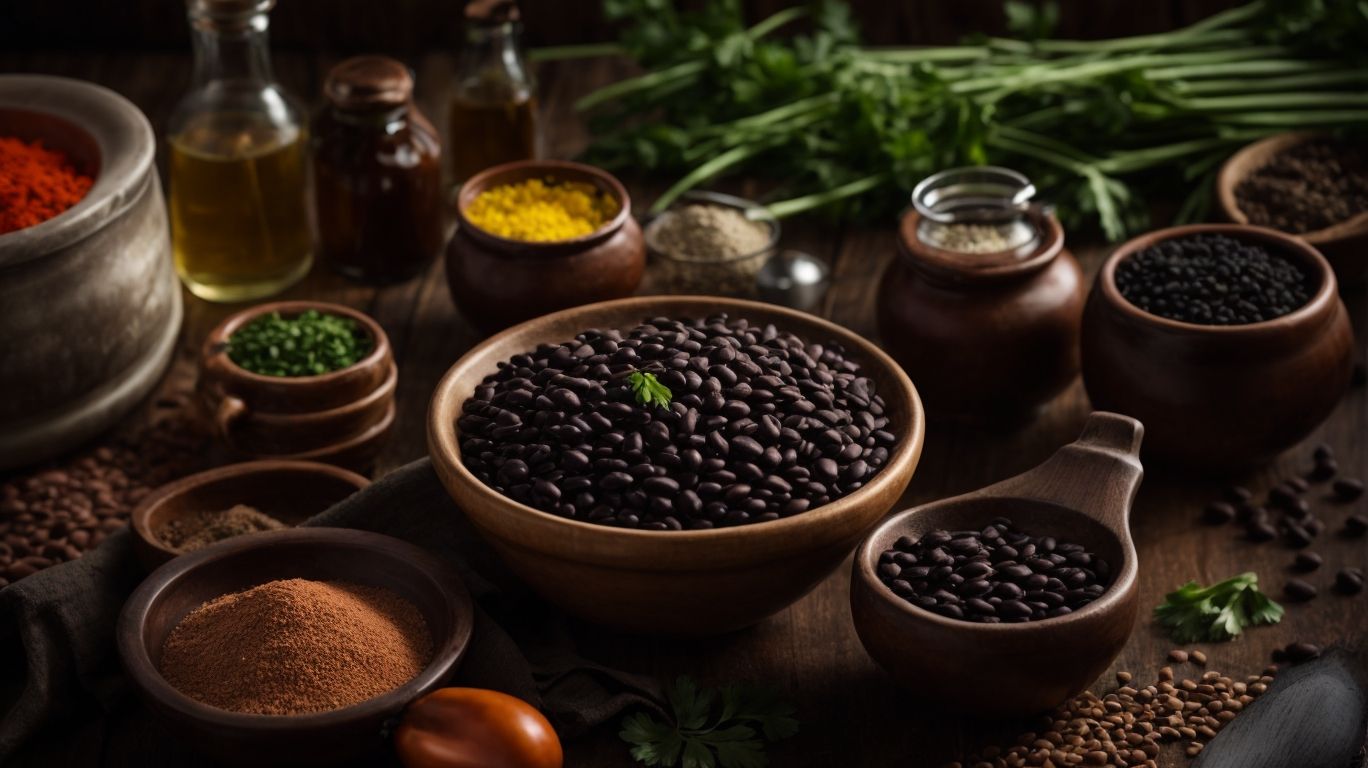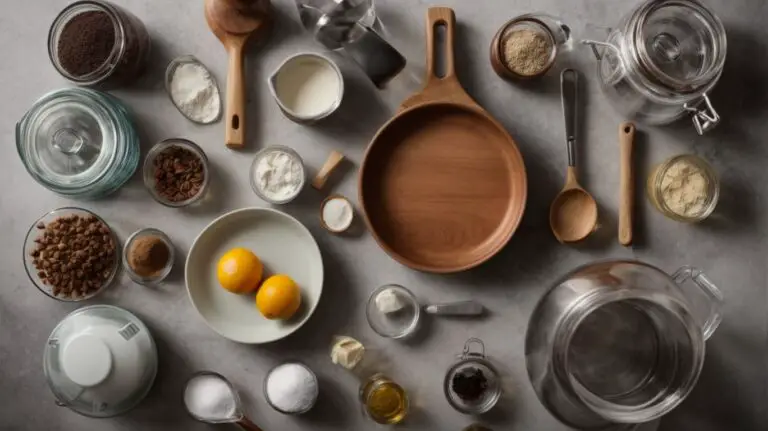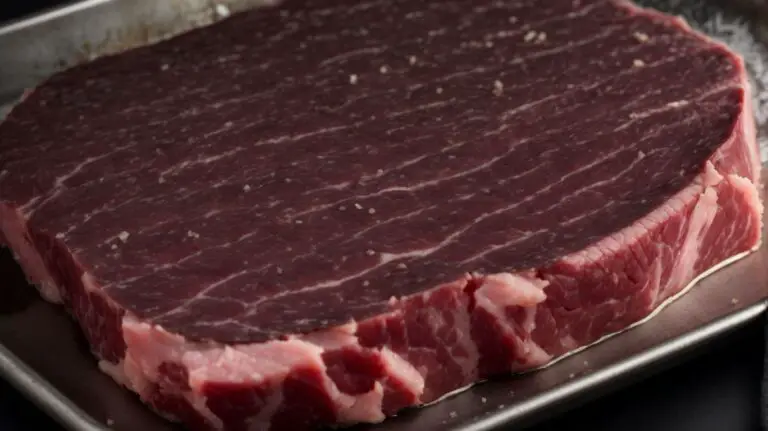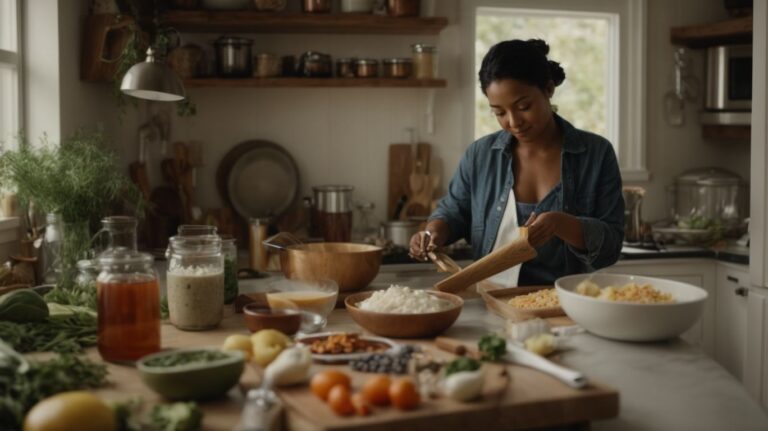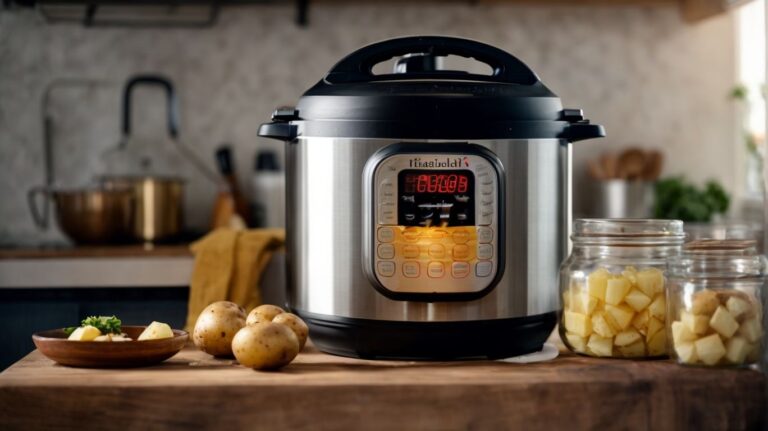How to Cook Black Eyed Beans After Soaking?
Are you looking to add a healthy and versatile ingredient to your cooking repertoire?
Black eyed beans are a nutritious and delicious option to consider. We will explore what black eyed beans are, their nutritional benefits, and the process of soaking and cooking them.
From different soaking methods to various cooking techniques, we’ll guide you through the steps to create mouthwatering dishes like black eyed bean salad, spicy curry, vegetable stew, and more.
Stay tuned for some final tips to perfect your black eyed bean cooking skills!
Key Takeaways:
What are Black Eyed Beans?
Black Eyed Beans, also known as black-eyed peas, are a popular legume often used in various dishes.
These beans have a distinctive white ‘eye’ or spot on their surface, which sets them apart visually. Rich in fiber and protein, black-eyed beans serve as a nutritious addition to any diet. Widely cultivated in Africa and Asia, they have been integral to traditional cuisines for centuries.
Black-eyed beans are excellent for soups, stews, salads, and side dishes. In Southern cuisine, they are a key ingredient in Hoppin’ John, a flavorful combination of beans, rice, and greens. In Brazilian cooking, you’ll find them in dishes like Acarajé, a fried bean fritter.
What Are the Nutritional Benefits of Black Eyed Beans?
Black Eyed Beans offer a range of nutritional benefits, making them a valuable addition to a balanced diet.
These beans are packed with protein, making them an excellent plant-based source for vegetarians and vegans. They are rich in fiber, aiding in digestion and promoting gut health. Black-eyed beans also contain essential vitamins such as thiamine, folate, and vitamin B6, crucial for overall well-being.
They are a great source of minerals like iron, magnesium, and potassium, contributing to heart health and maintaining proper bodily functions. Including black-eyed beans in your meals can help in managing weight, reducing the risk of chronic diseases, and keeping you energized throughout the day.
Soaking Black Eyed Beans
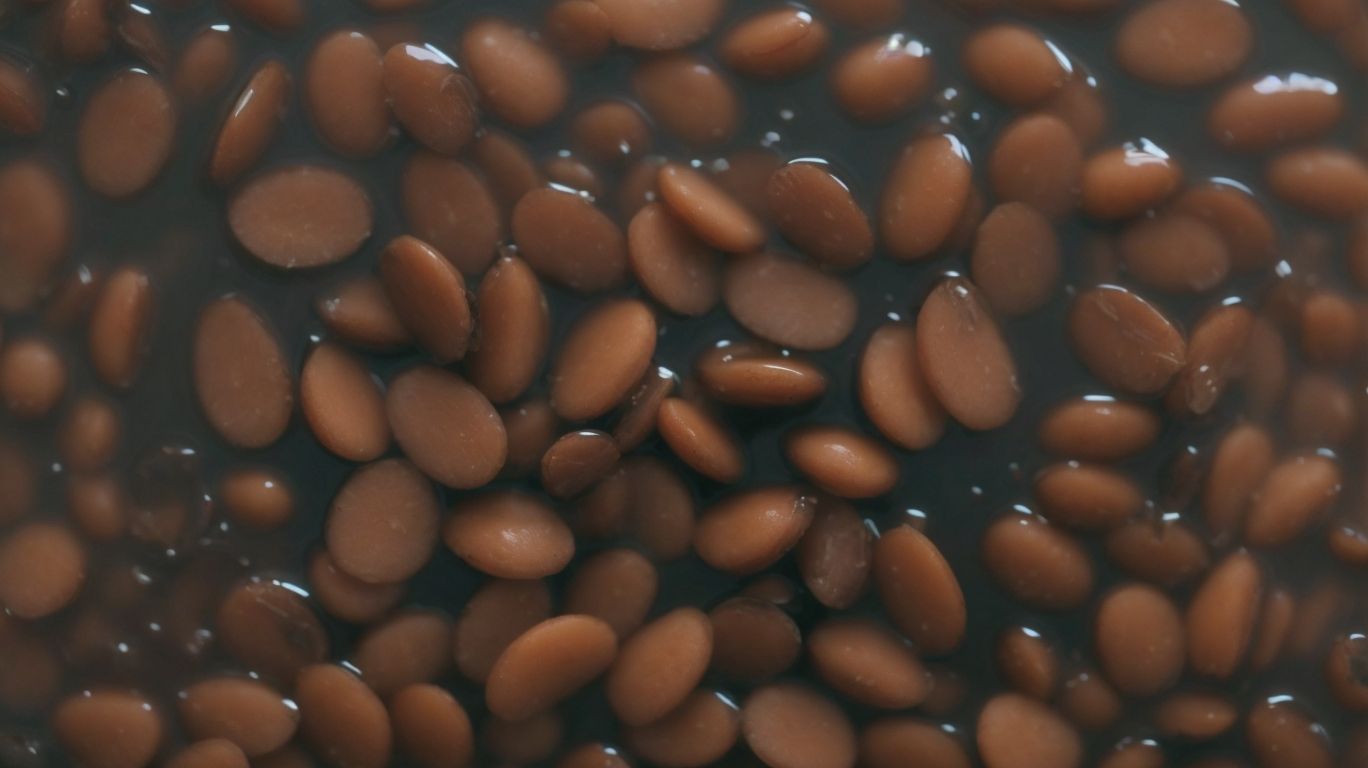
Credits: Poormet.Com – Edward Johnson
Soaking black-eyed beans is crucial to ensure proper cooking and digestion, enhancing their overall texture and flavor.
Why Should You Soak Black Eyed Beans?
Soaking black-eyed beans helps in reducing their cooking time and aids in better digestion by breaking down complex sugars.
When you soak black-eyed beans, the process softens the beans, making them quicker to cook when you eventually prepare them in your favorite dishes. This not only saves time but also helps in retaining the nutrients within the beans during the cooking process.
Moreover, soaking helps to remove some of the indigestible sugars present in the beans, which can often lead to digestive discomfort. By soaking, you are essentially kickstarting the germination process, which in turn enhances the overall digestibility of the beans.
The act of soaking these beans can also lead to a more pleasant texture and flavor profile, adding to the overall culinary experience. So next time you plan to cook with black-eyed beans, consider soaking them first for optimal results.
How Long Should You Soak Black Eyed Beans?
The ideal soaking time for black-eyed beans ranges from 4 to 8 hours, ensuring they become adequately hydrated for cooking.
Soaking black-eyed beans for too short a period may result in undercooked beans, while soaking them for too long can cause mushiness. The soaking time can be influenced by various factors, such as bean freshness, room temperature, and personal preference for the final texture.
To achieve the desired consistency, it is recommended to taste-test the beans periodically during soaking to check for readiness. Adding a pinch of salt to the soaking water can help enhance the flavor of the beans.
What Are the Different Methods of Soaking Black Eyed Beans?
There are multiple methods to soak black-eyed beans, including overnight soaking, quick soaking, and using a stovetop pressure cooker for rapid hydration.
Traditional overnight soaking involves placing the black-eyed beans in a bowl or container filled with water and letting them sit for at least 8 hours, allowing the beans to gradually absorb the liquid and soften.
For those looking to speed up the process, the quick soaking method entails boiling the beans for a few minutes, then removing them from heat and letting them sit in the hot water for an hour before draining and rinsing.
Alternatively, using a stovetop pressure cooker can significantly reduce soaking time by placing the beans with water and pressure cooking them for a fraction of the time needed for traditional soaking.
Cooking Black Eyed Beans After Soaking
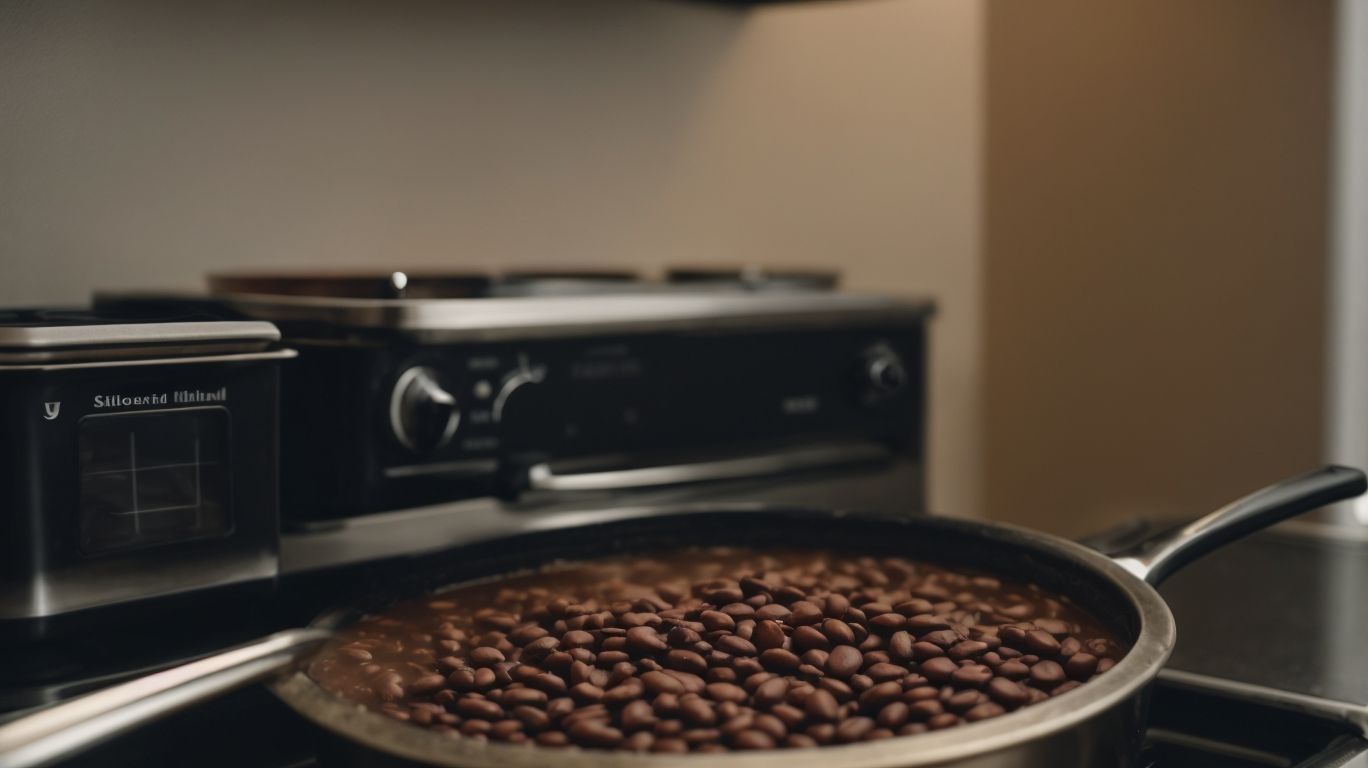
Credits: Poormet.Com – Kyle Rodriguez
Cooking black-eyed beans after soaking involves different methods and time considerations to achieve the desired texture and flavor in the final dish.
What Are the Different Ways to Cook Black Eyed Beans?
Cooking black-eyed beans offers versatility with methods such as stove-top preparation, slow cooker simmering, and quick Instant Pot cooking.
Each cooking method brings a unique flavor profile to these hearty legumes. When simmered on the stove, black-eyed beans slowly absorb flavors from aromatics like onions, garlic, and herbs, creating a rich and flavorful base for soups or stews.
In a slow cooker, the beans have hours to tenderize and soak up the savory broth, resulting in a melt-in-your-mouth texture that pairs beautifully with rice or cornbread.
Alternatively, using an Instant Pot can significantly reduce cooking time while maintaining the beans’ natural texture and nutrients, perfect for busy weekdays when you want a delicious and nutritious meal in a fraction of the time.
How Long Does It Take to Cook Black Eyed Beans After Soaking?
The cooking time for black-eyed beans post-soaking typically ranges from 45 minutes to 1.5 hours, depending on the method and desired tenderness.
When simmering black-eyed beans on the stovetop, it usually takes around an hour to achieve a perfectly tender texture, allowing the beans to absorb flavors from ingredients like onions, garlic, and bay leaves.
- For pressure cooking aficionados, the process can be significantly expedited to just 20-30 minutes, ideal for those seeking a quick and convenient meal.
- Alternatively, slow-cooking these legumes in a crockpot or slow cooker may require up to 3 hours, resulting in a rich, deeply flavored dish.
What Are Some Tips for Cooking Black Eyed Beans?
Enhance your black-eyed bean dishes with tips such as seasoning early, using homemade broth for added flavor, and incorporating fresh ingredients for a vibrant taste.
Seasoning early allows the flavors to meld together beautifully as the beans cook, enhancing the overall taste profile of your dish. When making your own broth, you can control the ingredients and tailor it to complement the specific flavors of the beans. Consider adding aromatics like garlic, onions, and bay leaves for depth of flavor. To customize your recipe further, experiment with fresh herbs such as parsley, cilantro, or thyme to add a burst of freshness and elevate the dish to a new level.
Recipes Using Cooked Black Eyed Beans
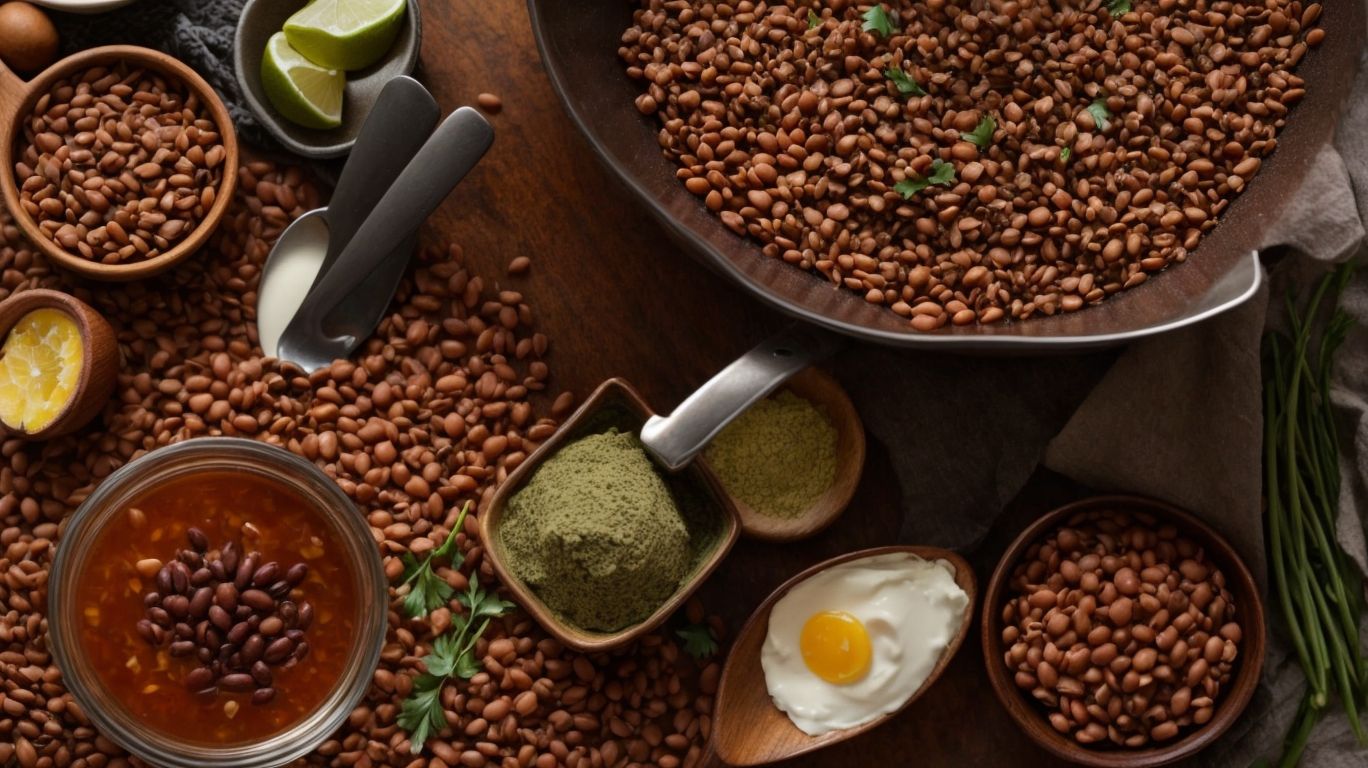
Credits: Poormet.Com – Jeremy Walker
Explore a variety of delectable recipes that showcase the versatility and deliciousness of cooked black-eyed beans, from salads to stews and savory dips.
Black Eyed Bean Salad
Indulge in a refreshing Black Eyed Bean Salad featuring vibrant spinach, hearty black-eyed beans, and a zesty dressing for a burst of flavors and nutrients.
Start by rinsing and draining a can of black-eyed beans to remove excess sodium. Combine the beans in a large mixing bowl with fresh spinach leaves, chopped red onions, diced cherry tomatoes, and sliced cucumbers for added crunch and freshness.
Prepare the zesty dressing by whisking together olive oil, lemon juice, minced garlic, a touch of honey, and a sprinkle of cumin and paprika for a fragrant and tangy flavor profile. Drizzle the dressing over the salad ingredients and gently toss to coat everything evenly.
For an extra boost of protein, add some grilled chicken strips or crumbled feta cheese on top. Serve the salad chilled and garnished with fresh parsley or cilantro for a vibrant presentation that will impress your guests at any gathering.
Spicy Black Eyed Bean Curry
Savor the bold flavors of a Spicy Black Eyed Bean Curry, combining aromatic spices, tender beans, and rich sauces for a delightful culinary experience.
Start by sautéing onions, garlic, and ginger in a skillet until fragrant, then add in a mixture of ground cumin, coriander, turmeric, and garam masala to create a flavorful base.
Once the spices release their aroma, introduce soaked black-eyed beans and diced tomatoes to the pan, allowing them to simmer and absorb the spices.
For that extra kick, sprinkle in some red chili powder or fresh chopped green chilies depending on your preferred spice level.
Let the curry simmer gently until the beans are tender and fully cooked, then garnish with fresh cilantro and a squeeze of lemon juice before serving it piping hot over fluffy steamed rice or with warm naan bread.
Black Eyed Bean and Vegetable Stew
Warm up with a comforting Black Eyed Bean and Vegetable Stew featuring hearty beans, vibrant collard greens, and a medley of seasonal vegetables for a nourishing meal.
As you simmer the beans with diced onions, minced garlic, and a hint of smoked paprika, the hearty aroma fills the kitchen, teasing your taste buds. Feel free to add your favorite seasonal vegetables like carrots, bell peppers, and zucchini to enhance the flavors and textures of this wholesome stew.
Once the stew reaches a rich, velvety consistency, it’s time to serve it piping hot in deep bowls. Optionally, sprinkle some freshly chopped parsley or a squeeze of lemon juice for a refreshing twist. Pair this stew with warm crusty bread or fluffy quinoa for a satisfying meal that nourishes both body and soul.
Black Eyed Bean Dip
Dive into a creamy Black Eyed Bean Dip, blending smooth beans, tangy spices, and fresh herbs for a versatile dip that complements any occasion.
To make this delectable dip, start by gathering your ingredients: 1 can of black-eyed beans, 1 clove of garlic, a handful of fresh cilantro, a pinch of ground cumin, a squeeze of lemon juice, and salt and pepper to taste. Rinse and drain the beans, then blend them in a food processor with the garlic, cilantro, cumin, and lemon juice until smooth and creamy. Adjust the seasoning with salt and pepper.
Serve the Black Eyed Bean Dip in a bowl garnished with a drizzle of olive oil, a sprinkle of chopped cilantro, and a side of warm pita bread, tortilla chips, or fresh veggies for dipping. This flavorful dip is perfect for parties, gatherings, or simply enjoying as a snack!
Conclusion
Cooking and savoring black-eyed beans not only offers a delicious culinary experience but also symbolizes tradition, good luck, and the joy of sharing wholesome meals with loved ones.
Across various cultures and cuisines, black-eyed beans hold a special place, often featured in traditional dishes during festive occasions and celebrations.
Many cultures consider black-eyed beans as a symbol of prosperity and good fortune, making them a staple ingredient in dishes prepared for New Year’s feasts and other auspicious events.
Not only are these beans rich in dietary fiber and essential nutrients, but they also have been associated with promoting good health and well-being.
Final Tips for Cooking Black Eyed Beans After Soaking
To elevate your black-eyed bean dishes, consider experimenting with different seasonings, incorporating fresh herbs, and infusing love and good luck into each preparation for a truly unforgettable meal.
While traditional seasoning like salt, pepper, and garlic powder work well, you can also spice things up with cumin, smoked paprika, or garam masala for a unique flavor profile. Fresh herbs like parsley, cilantro, or rosemary can add a pop of freshness to your dish. Remember, when cooking, the energy you put into the food matters. Culturally, black-eyed beans are associated with prosperity and good fortune, so cooking them with intention and positivity can enhance the overall dining experience.
Frequently Asked Questions
1. How to Cook Black Eyed Beans After Soaking?
To cook black eyed beans after soaking, simply follow these steps:
- 1. Drain and rinse the soaked beans thoroughly.
- 2. Add the beans to a pot and cover with water.
- 3. Bring the water to a boil and then reduce to a simmer.
- 4. Cook for 45 minutes to an hour, or until beans are tender.
- 5. Drain the water and use the beans in your desired recipe.
2. Can you soak black eyed beans for too long?
Yes, it is possible to soak black eyed beans for too long. It is recommended to soak them for 8-10 hours or overnight. Soaking for longer than 12 hours can cause the beans to become mushy and lose their texture.
3. Do I have to soak black eyed beans before cooking?
While it is not necessary to soak black eyed beans before cooking, it can help to reduce the cooking time and make the beans more digestible. Soaking also helps to remove any dirt or debris from the beans.
4. How do I know when black eyed beans are done soaking?
Black eyed beans are done soaking when they have doubled in size and are soft to the touch. You should be able to easily break the bean in half with your fingers.
5. Can I cook black eyed beans without soaking?
Yes, you can cook black eyed beans without soaking, but it will take longer for them to become tender. You may also need to add more water during the cooking process to prevent the beans from drying out.
6. How long can I keep soaked black eyed beans in the fridge?
You can keep soaked black eyed beans in the fridge for up to 3 days. Make sure to store them in an airtight container and cover them with water. Drain and rinse the beans before using them in a recipe.

